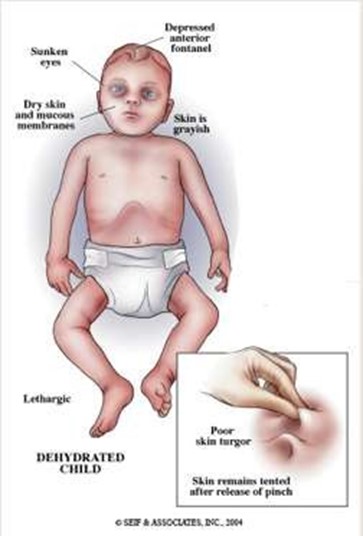A nurse is setting up a sterile field to perform wound irrigation for a client.
Which of the following actions should the nurse take when pouring the sterile solution?
Place sterile gauze over areas of spilled solution within the sterile field.
Hold the irrigation solution bottle with the label facing away from the palm of the hand.
Remove the cap and place it sterile-side up on a clean surface.
Hold the bottle in the center of the sterile field when pouring the solution.
The Correct Answer is C
The correct answer is c. Remove the cap and place it sterile-side up on a clean surface.
Choice A rationale:
Placing sterile gauze over areas of spilled solution within the sterile field is incorrect. If solution is spilled within the sterile field, the entire field should be considered contaminated and a new sterile field should be set up
Choice B rationale:
Holding the irrigation solution bottle with the label facing away from the palm of the hand is incorrect. The label should face the palm of the hand to avoid contamination of the sterile field
Choice C rationale:
Removing the cap and placing it sterile-side up on a clean surface is correct. This ensures that the sterile side of the cap remains sterile and can be used to recap the bottle after pouring the solution
Choice D rationale:
Holding the bottle in the center of the sterile field when pouring the solution is incorrect. The bottle should be held over the edge of the sterile field to avoid contamination of the field if solution spills
Nursing Test Bank
Naxlex Comprehensive Predictor Exams
Related Questions
Correct Answer is C
Explanation
This is because postural drainage involves positioning the child in different ways to help drain the mucus from the lungs. If the child has a full stomach, this can cause nausea, vomiting, or aspiration. Therefore, the nurse should perform the procedure before meals or at least 1 hour after meals.
Choice A is wrong because the nurse should not hold the hand flat to perform percussions on the child.
Percussions are rhythmic clapping on the chest wall to loosen the mucus. The nurse should use a cupped hand to create a small air pocket that enhances the vibrations and prevents bruising.
Choice B is wrong because the nurse should not perform the procedure twice a day. The recommended frequency of postural drainage is 3 to 4 times a day, or more if needed, depending on the child’s condition and tolerance.
Choice D is wrong because the nurse should not administer a bronchodilator after the procedure.
A bronchodilator is a medication that relaxes and widens the airways, making it easier to breathe. The nurse should administer a bronchodilator before the procedure to enhance the effectiveness of postural drainage.
Correct Answer is A
Explanation

These are signs of severe dehydration in an infant, which can be life-threatening and should be reported to the provider immediately. The infant may need intravenous fluids and electrolytes to restore hydration and prevent complications.
Choice B is wrong because a temperature of 38° C (100.4° F) and a pulse rate of 124/min are not abnormal for an infant and do not indicate severe dehydration. These are common findings in an infant who has gastroenteritis, which is an inflammation of the stomach and intestines caused by a virus, bacteria, or parasite.
Choice C is wrong because decreased appetite and irritability are also common findings in an infant who has gastroenteritis, but they do not indicate severe dehydration. The nurse should encourage oral rehydration with fluids such as breast milk, formula, or oral electrolyte solution.
Choice D is wrong because pale skin and a 24-hr fluid deficit of 30 mL are not signs of severe dehydration in an infant.
A fluid deficit of 30 mL is less than 1 oz and is not significant for an infant who weighs about 10 kg (22 lbs). A fluid deficit of more than 10% of body weight would indicate severe dehydration.
Normal ranges for vital signs in infants are as follows:
• Temperature: 36.5° C to 37.5° C (97.7° F to 99.5° F)
• Pulse rate: 100 to 160/min
• Respiratory rate: 30 to 60/min
• Blood pressure: 65/41 to 100/50 mm Hg
Normal ranges for fluid intake and output in infants are as follows:
• Fluid intake: 100 to 150 mL/kg/day
• Fluid output: 1 to 2 mL/kg/hr
Whether you are a student looking to ace your exams or a practicing nurse seeking to enhance your expertise , our nursing education contents will empower you with the confidence and competence to make a difference in the lives of patients and become a respected leader in the healthcare field.
Visit Naxlex, invest in your future and unlock endless possibilities with our unparalleled nursing education contents today
Report Wrong Answer on the Current Question
Do you disagree with the answer? If yes, what is your expected answer? Explain.
Kindly be descriptive with the issue you are facing.
